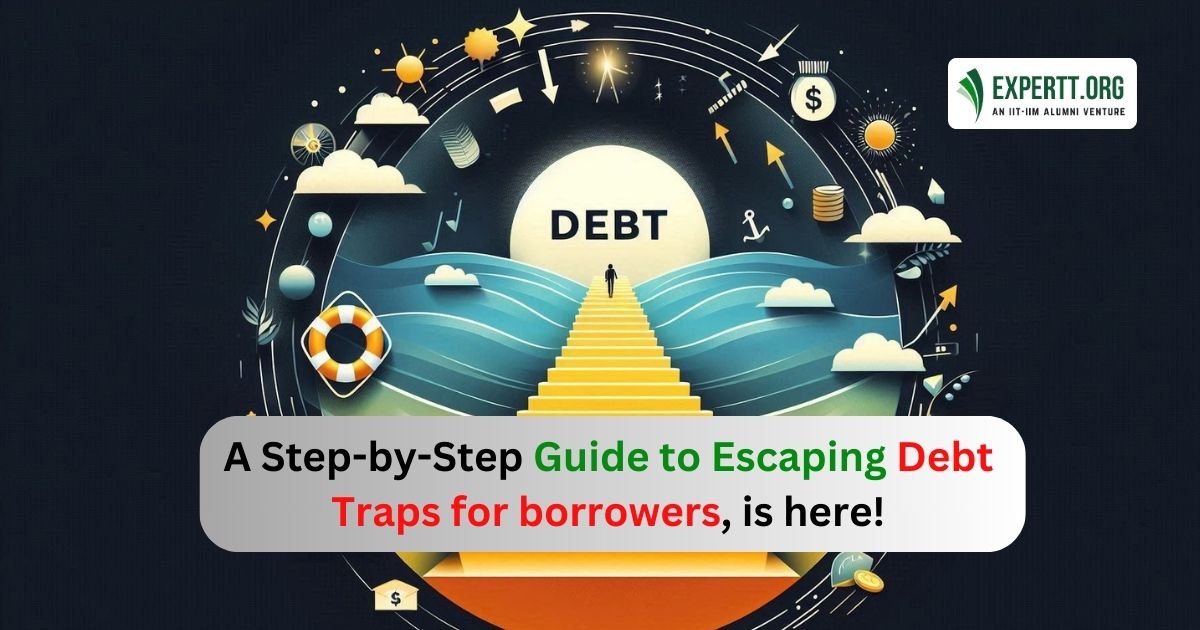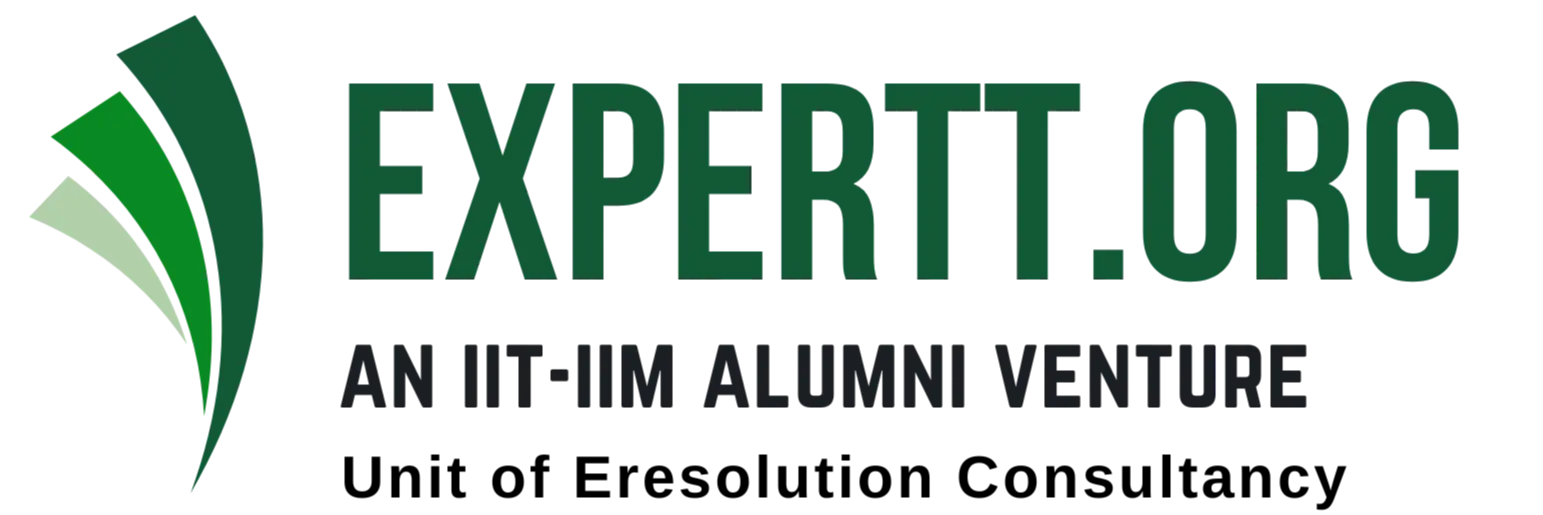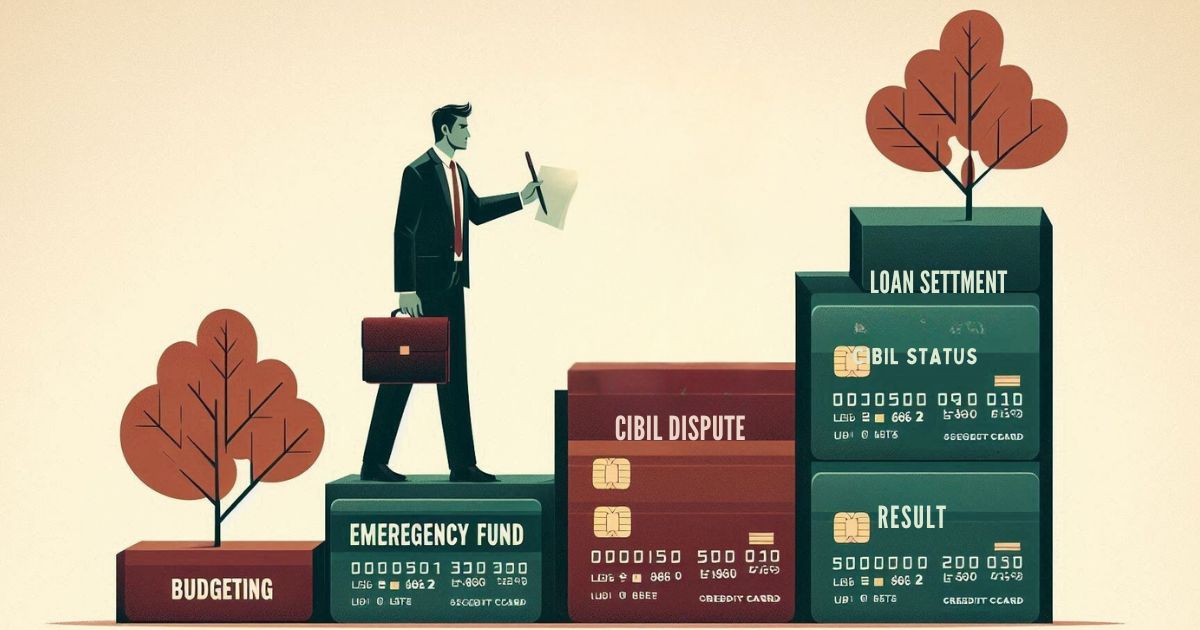· Debt Management · 4 min read
Step-by-Step Guide to Escaping Debt Traps for Borrowers, is Here!
Debt can silently erode both your financial stability and emotional well-being, leaving you trapped in an endless cycle of borrowing and repayment. But what if there was a way out? This comprehensive guide will walk you through practical strategies to regain control over your finances and pave the path toward a debt-free future.

Your financial security and emotional well-being can be eroded by debt, which can be a silent but tenacious enemy. The prospect of getting out of this financial trap may seem like an unattainable goal to many. However, what if I told you there is a solution? Let’s get started with this in-depth guide to help you take back control of your money and boldly move towards living a debt-free life.
It’s important to define the debt trap before talking about how to get out of it. When you’re stuck in a never-ending loop of borrowing and repaying loans, you can find yourself in a debt trap. Have you ever had to take out a loan to pay off another loan? Or used your credit card to cover all your monthly expenses because your EMIs consume all your salary?
Steps to Fight Debt Traps and Achieve Financial Freedom
Make a Detailed Review of Your Existing Debt Position
The first step towards liberty is reviewing your debt. To whom and how much do you owe? Make a list of every debt you have, including personal loans, credit card debt, mortgages, and unofficial loans.Set Repayment as a Top Priority
Once you have a clear picture of your debts, prioritizing repayment becomes crucial. But how do you choose which loan to start paying off first? By starting with the smallest obligations and working your way up, the snowball method helps you feel better mentally as you pay off debt. Alternatively, you can save more money over time by using the avalanche method, which prioritizes paying off loans with the highest interest rates first.Create and Adhere to a Reasonable Budget
Making and adhering to a reasonable budget is essential to getting out of the debt cycle. Have you ever closely monitored your spending? If not, this is your chance. Keep track of all your expenses, group them, and find areas where you may save. Set aside a specific portion of your income for paying off debt.Negotiate with Your Creditors
You might be surprised to hear that negotiating with your creditors often leads to better repayment terms. If you demonstrate a sincere effort to repay, creditors may be willing to lower interest rates, extend repayment terms, or even accept a smaller payment. It never hurts to ask. Get in touch with your creditors and prepare a proposal. A clear commitment to repayment and clear communication can be quite effective.Consider Debt Consolidation
One useful tactic for managing multiple debts is debt consolidation. Combining all your loans into a single loan with a reduced interest rate can simplify repayments and reduce interest costs. However, doing your homework is essential. Make sure the new loan truly offers a lower interest rate, read the fine print, and compare the various consolidation options.Explore a One-Time Settlement (OTS)
Borrowers overwhelmed by debt may find that a One-Time Settlement (OTS) is a good option. It involves negotiating a lower total amount of the outstanding debt with the lender. Essentially, the debt is closed when the lender agrees to accept a lump sum payment that is less than the full amount owed. Both borrowers and lenders can benefit from this arrangement, as it helps the former clear debt more quickly and the latter recover a portion of the loan that might otherwise be written off as a loss.
Know Your Rights: Legal Safeguards and Global Debt Insights
In many countries, borrowers have legal protections against unethical recovery practices. For instance, the United States has the Fair Debt Collection Practices Act (FDCPA), which prohibits debt collectors from using unfair or abusive practices, landmark judgments such as ICICI Bank Ltd. v. Prakash Kaur emphasize that banks cannot resort to muscle power for loan recovery, underscoring the rule of law even in debt recovery.
Further insights into successful debt management techniques can be found in research articles published internationally. As per the International Monetary Fund (IMF) assessment, nations with comprehensive frameworks for managing debt have significantly reduced rates of family debt traps . Similarly, a World Bank study highlights the importance of strong legal frameworks and financial literacy in managing and preventing debt .
Getting out of thee is a journey, not a race. It demands patience and unwavering dedication. For inspiration and guidance, consider consulting friends, family, or financial professionals.
Conclusion
Escaping the debt trap is not impossible. It is a journey that calls for a well-thought-out plan, methodical execution, and unwavering dedication. You can free yourself from the chains of debt and step into a future of financial freedom by evaluating your debt, prioritizing repayment, creating a realistic budget, exploring consolidation options, negotiating with creditors, increasing income, remaining committed, knowing your legal rights, and learning from research and real-world examples.


 Master Your Credit Card Debt Before It Masters You! (1).DFP32oYI.jpg)
